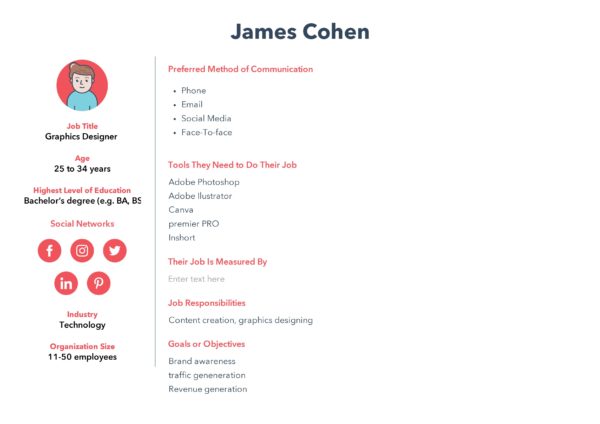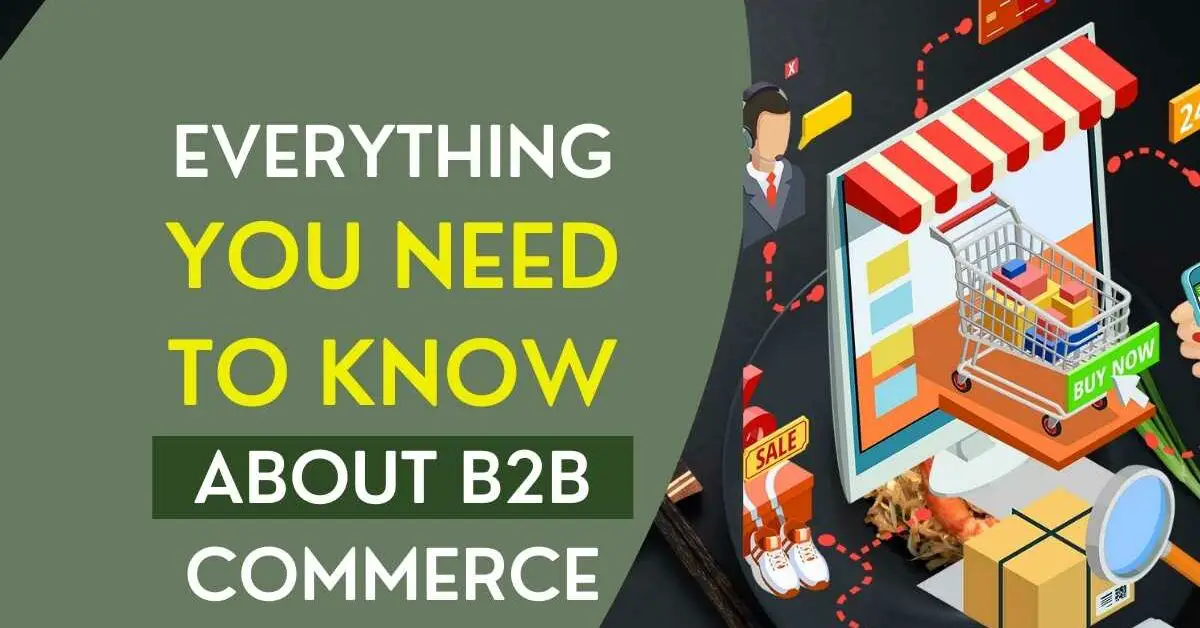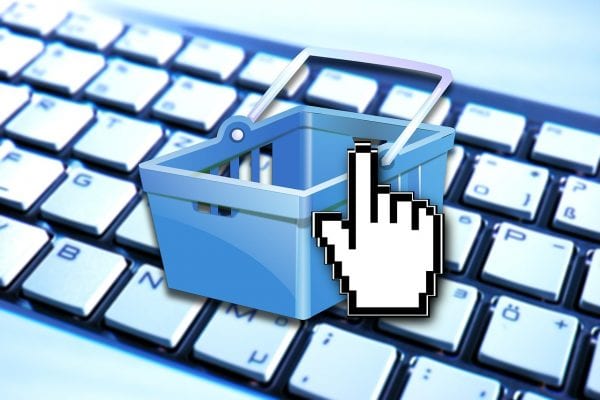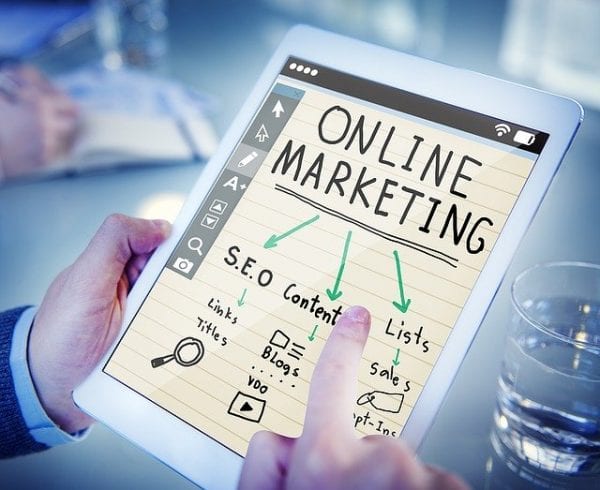The importance of B2B commerce has increased tremendously in the past years and has gradually overtaken the b2c landscape. Statistics show that the global B2B e-commerce market was valued at $14.9 trillion which is over five times that of the B2C market. Furthermore, Forrester predicts that B2B e-commerce will account for 17% of all B2B sales in the U.S. which will reach $1.8 trillion by 2023. From the following statistics, it can be deduced that b2b commerce is reaching a new height and as a business owner you have to key into it. In this article, we are going to discuss all you need to know about B2B commerce and how to get started.
What is B2B commerce?
B2B e-commerce, or business-to-business electronic commerce, refers to the buying and selling process between two businesses. B2B commerce differs from B2C in the sense that you transact with other businesses, not your favourite online retailer because you’re a consumer, not a business. But when an online retailer buys its inventory online from another company, that’s B2B eCommerce. B2B involves businesses, such as those involving a manufacturer and wholesaler, or a wholesaler and a retailer ” that take place via an electronic medium. Therefore B2B commerce in a much broader form refers to transactions between businesses via a website or a mobile app, oftentimes in which the purchase decision is significantly influenced by product research, reviews, and ratings.” An example of B2B eCommerce is a wholesale website such as Alibaba that facilitates business-to-business commerce sales through its platform.

Statistics Supporting The Importance of B2B Commerce.
- According to worldwide e-commerce, sales are expected to cross $1 trillion in 2022. B2B eCommerce, when compared to the B2C industry, is projected to be two times bigger than B2C in 2020. It’s anticipated to be the area of largest eCommerce growth from 2020 to 2025.
- Merit claims that 73% of B2B buyers today are Millennials, who prefer buying online and this is why B2B eCommerce growth has occurred at such lightning speed.
- 50% of B2B search queries were made on smartphones, and the Boston Consulting Group expects this figure to reach 70% in 2020.
- According to a Statista survey from September 2021, 26% of B2B buyers made 50% to 74% of their purchases from a B2B eCommerce marketplace.
- Statista data suggests that the North American B2B e-commerce market will surpass $4,600 billion by 2025.
- Its clear e-commerce itself is no longer a trendy new channel that B2B companies are exploring. Instead, McKinsey & Company reports that about 65% of B2B companies across industries are fully transacting online in 2022. And for the first time, B2Bs are more likely to offer e-commerce over in-person sales.
Types of B2B Ecommerce
There are five main B2B e-commerce models: manufacturing, wholesale, distribution, retail and B2B2C. Here’s a breakdown of each type:
Manufacturer
Manufacturers are businesses that use raw materials to produce goods on a large scale. In terms of B2B e-commerce, the manufacturer operates an e-commerce portal or online portal or e-commerce website where other businesses can buy goods. Most businesses that buy from the manufacturers are wholesalers and other manufacturers. For example, in the computer or tech industry, a company that manufactures computers might source individual computer parts from many other manufacturers. Each is part of a B2B relationship that leads to the production of computers sold to consumers.
Wholesalers
The wholesalers are those companies that purchase goods in bulk at a low price from the manufacturer or distributors, and then sell them for a profit. These products are usually sold at retail value but cost less since the supplier offers discounts on wholesale purchases.
Wholesalers depend on personalized product catalogues and price lists to make purchases. When it comes to selling, today’s wholesalers operate across multiple marketplaces. Online marketplaces have made it easier for wholesalers to showcase their products and provide a seamless customer experience.
The Best Platforms to Run Your eCommerce Ads
Distributors
Distributors are more like middlemen and are not involved in the B2B e-commerce chain. Most distributors work with manufacturers to both sell and deliver products for them. Once an order comes in from a customer, the distributor will collect the goods from the manufacturer, load them and deliver them on time.
Distributors usually deal more with wholesalers who buy their products in bulk for resale. Wholesalers in turn work more closely with retailers, which allows them to match customers’ needs with the items in stock.
Retailers
Retailers deals with distributors, wholesalers and sometimes manufacturers to buy products and sell to consumers via their online and/or brick-and-mortar stores. Retailers operate more in the B2B space and have a much narrower target audience.
B2B2C.
Business-to-business-to-consumer (B2B2C) e-commerce eliminates the middleman usually between the B2B organization and the B2C, putting the businesses directly in contact with the consumer. This model can be described as how a wholesaler or manufacturer interacts with traditional B2B and B2C models.
It works this way. The wholesaler or manufacturer sends goods to B2B, and those goods are then sold to the final consumer. In a B2B2C model, the wholesaler or manufacturer gets their product to the consumer by either partnering with the B2B company or selling directly to the consumer. Most of these transactions happen online via an e-commerce site or even apps.
Top 8 CMS Platform For eCommerce Business
Difference Between B2B and B2C eCommerce
B2B eCommerce is an online business model that involves online sales transactions between two businesses, while B2C eCommerce on the other hand is an online business transaction that happens between a business and the consumer. That is the business sells directly to the consumer.
For example, an online company that sells laboratory equipment is a B2B business because its primary target market is other businesses.
An example of a B2C transaction would be someone buying a smartphone or a pair of shoes from an online store. It is likely the model that most people are familiar with.
Some companies also operate as both B2B and B2C businesses. For instance, a digital marketing company might run Google ads and Facebook ads for a particular company, but may also run campaigns for a couple’s wedding.
How to Get Started with B2B Commerce
Like any other business venture, there are steps and procedures you need to take before starting any project. Whether you are a small business or a large company, every successful B2B e-commerce business has to do with implementation starting with the following 10 steps.
Identify your goals
Before diving into any business, you have to ask yourself the reason why you are getting into that business. The best way to get started on b2b commerce is to identify your goals and objectives. You can start by asking yourself some of the following questions.
Why do I want to start a b2b commerce now? What are the business advantages? What do I want to achieve by starting an online store? What does e-commerce success look like to my company? How does it fit into my overall company strategy?.
Some E-commerce goals include:
- Increasing revenue
- Increasing the number of customers
- Create more awareness for your brand
- Generate and nurture leads
- Freeing up time for your sales and support teams
- Lowering overhead costs
- Increasing the efficiency of the ordering process and reducing order errors
- Improving your customer experience
Knowing this will help you set clear e-commerce KPIs (key performance indicators) that align with your goals and strategy. The KPIs will allow you to measure the success of your goals and see if your business is making a profit.
Best Workflow Automation for Ecommerce
2. Know your customers
Apart from knowing your goals and objectives, you need to focus on and identify your customers. The success of your e-commerce store relies on their shopping needs and experience. Your customers will only use your web store if it suits them. It is therefore imperative to build your e-commerce plans around your customers. This means knowing what they are looking for and what they expect and delivering against these requirements.
First, you need to create a customer personae, to identify your ideal customers. Then you need to create a customer journey map to help understand the pain point and touchpoints various customers go through when they want to make a purchase. Put yourself in your customers’ shoes: What do they need? How do they buy products? What experience do they expect? Their priorities could vary widely from accessing real-time information 24/7 to the ability to select existing payment options in the web store or even transparency on order status and delivery updates. The best way to find out what your customers want is to go out there and ask them. You can create a survey and send it out to your customers. Carry out research, start with your biggest customers. Include those that are a big fan of b2b commerce, as well as those who are sceptical about ordering online. Then, see if you can find some common ground between all these varying needs.
3. Choose a b2b commerce platform
After you have identified your goals and have any idea of who your customers are, the next step is to choose your preferred b2b platform. Note that the b2b platform you choose must be able to meet your standard in terms of pricing, features and compatibility. Your platform should be able to integrate well with email marketing platforms, social media platforms, live chats, order management tools, Easy subscriptions, re-orders and CRM tools. Some b2b commerce platforms include big commerce, Shopifyplus, OpenCart, Magento, and shift4Shop among others.
A B2b commerce platform can help you with the following:
- Provide personalized sales and marketing experiences across sales channels and devices
- Help customers find products with onsite search and customized navigation
- Integrate customer data from your ERP or CRM through reliable APIs
- Offer flexible payment options with different payment providers and manual invoicing
- Optimize for conversion with powerful checkout promotions
- Create custom pricing and discounts for specific customer segments
- Automate and review new buyer signups
- Allow B2B customers to buy, track, and reorder products easily
- Sync inventory, purchase orders, and customers with an existing e-commerce store or third-party software
4. Get your content ready for your b2b commerce store
Once you have found the right e-commerce platform for your b2b business, it’s time to start uploading content to your website. By content, I mean product descriptions and images, to web store look-and-feel, structure and categories. So, you need to be prepared to structure and fill your web store. Think about what products you are going to sell. Decide what the structure, main categories and subcategories will be. Check that you have an image for each product and that these images are of good-enough quality. Perhaps you also need to create blogs, youtube channels, and social media pages to share some technical materials, like how-to videos, product explainer videos, and articles on various topics in your industry to give more information about your company and product.
Strategies for Ensuring Your B2B eCommerce is a success
Here are a few strategies you can implement to ensure that your b2b commerce is a successful one.
1. Develop a Customer Persona

A customer persona is a general characterization of an individual who is a part of the company’s target audience and classifications like name, age, gender, interests, and purchasing behaviour. This tactic goes both ways for B2B and B2C. Having this persona will help you cut down on time by helping to classify your target audience and making sure that your content reaches the right audience.
2. Create A Blog About Your Niche
Creating a b2b commerce website is not enough to help you drive traffic and increase revenue. You need to also create value for your audience. Your eCommerce store is for other businesses. They want information that will help them make rational decisions. Creating blog posts and articles about your industry will help in educating the customers and keeping them informed. The revenue generated from video-related interactions has gone up by 69% since April 2020 attracting customers to your website while gaining valuable SEO.
3. Maintain a social media presence
Another strategy to ensure that your b2b remains a success is by creating social media platforms. By creating social media platforms, you can promote your product and services to a larger audience. The first thing is to identify which social media platforms your customers are and after you have identified the platforms, you can start promoting your content to engage with them. You can create offers, giveaways, discounts, share blog posts, and testimonials and run social media ads to attract more customers.
4. Create a user-friendly B2B platform
When it comes to the B2B commerce platform, a basic e-commerce solution won’t cut it. B2B customers have certain expectations and preferences when buying goods online, which makes it important to get the right platform right. Ensure that your website is user-friendly. A user-friendly B2B e-commerce platform will have an intuitive user experience. Visitors will be able to find and assess information easily, tools will load smoothly, and customer service will be easily accessible to visitors if they have any questions. It must be responsive to both mobile and desktop users. According to Statista, mobile shopping makes up 31% of all e-commerce sales, and that trend is not going down anytime soon. So your website must be optimized for mobile devices
Conclusion
From the statistics established in the article, it can be deduced that B2B eCommerce is a very lucrative and booming industry and will continue to do so in the coming future thanks to the advancement in science and technology. As a business owner, you need to key into this opportunity because the e-commerce industry is not slowing down anytime soon. B2B e-commerce is a great way to find new customers and increase revenue for your business. Therefore any business that wants to take advantage of the b2b commerce industry should focus on the strategy we have listed above including getting the right b2b commerce, identifying their goals and objectives and personalizing the shopping experience.






